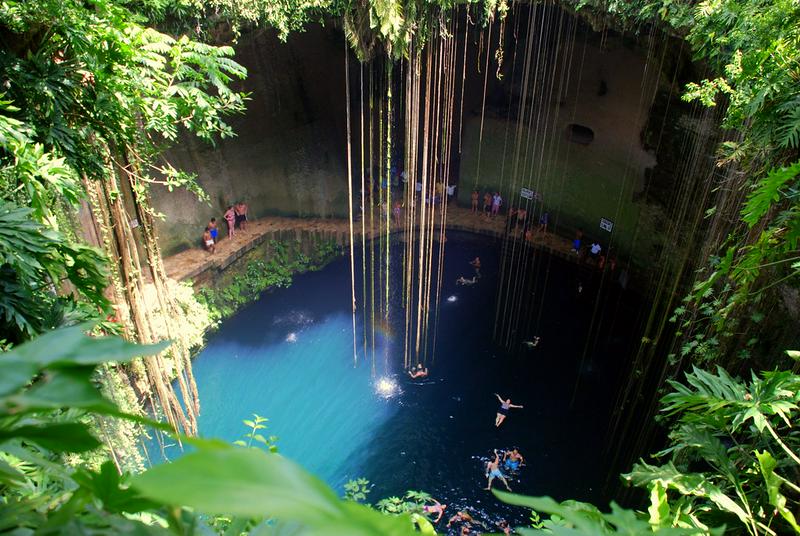Cenotes Of The Yucatan Peninsula
By | September 5, 2019

Popular among tourists in Mexico are the Cenotes, whose name comes from the Mayan word “ts’onot” which was used to describe an underground water source. There are more than six thousand of these deep wells in the Yucatan Peninsula alone. While today they are primarily a source of tourist revenue, the cenotes served a far more vital role in the ancient Mayan civilization.
Cenotes are natural sinkholes which formed in areas with a limestone-based bedrock. As rainwater seeped through the soil, it dissolved the limestone, eventually causing the ground above to collapse. This resulted in giant caves filled with water, thus creating a series of underground lakes connected by subterranean rivers. Many of these cave systems span several miles. The concentration of cenotes around the Chicxulub crater, which is believed to be the impact site of the asteroid which exterminated the dinosaurs, suggests the impact accelerated the formation of the cenotes.

There are four types of cenotes. Pit cenotes have a narrow entrance at the ground’s surface compared to the much wider diameter at the bottom. These are also referred to as jug cenotes. Cylinder cenotes are characterized by steep vertical walls. Cave cenotes, on the other hand, are named for the cave-like entrances which are located to the side rather than above the cenote. The final type of cenotes is the basin cenote, which is bowl-shaped and has shallows.

The Mayans considered the cenotes to be sacred. This was likely due to the fact that they were the only source of fresh water as the Yucatan has no rivers or streams. The cenotes were a common subject of Mayan art and historians believe that the Mayans considered the cenotes to be the entrance to the underworld. Skeletal remains, as well as several artifacts like weapons and jewelry, have been found in the cenotes and have led historians to believe that humans were thrown into the cenotes as sacrifices to the rain deity, Chaak. This was possibly an attempt to ward off the drought which contributed to the decline of the Mayan civilization.

One of the most beautiful cenotes in Mexico, Cenote Ik-kil is located in Ik-kil Archeological Park near Chechen Itza, Yucatan. Hanging vines and waterfalls contribute to its aesthetic appeal. However, it is one of the cenotes believed to have been used for human sacrifice due to the discovery of human bones and jewelry at the bottom of the sinkhole. One of the most famous cenotes is Cenote Dos Ojos, located in Dos Ojos Natural Park near Tulum. Its name, which means “Two Eyes” was inspired by its two sinkholes, which are linked by a 400-meter passage and make up one of the largest underwater cave systems in the world.

Their natural beauty and comfortable temperatures make the cenotes a popular tourist attraction. Tour packages often include a visit to nearby ruins accompanied by the opportunity to swim in one of the cenotes. The clear water and beautiful underground geological formations make them ideal for snorkeling and diving. Locals have capitalized on these features, adding changing rooms and bathrooms while charging a nominal fee to guests wishing to experience these wonders of nature.

